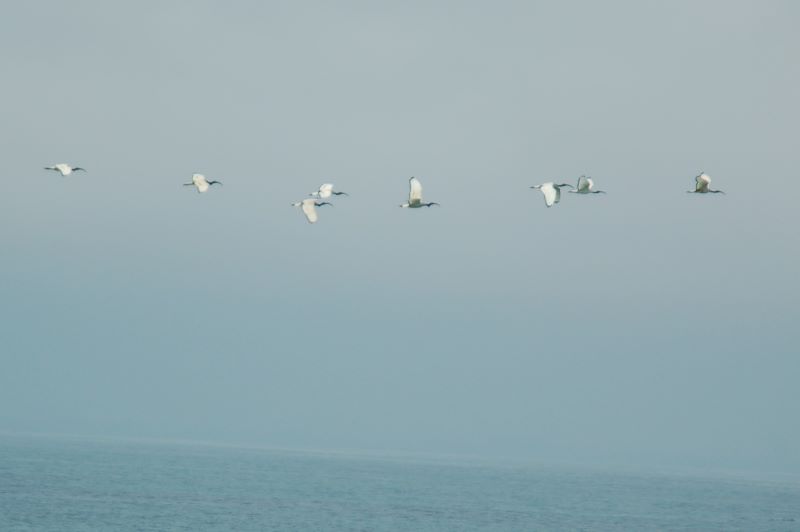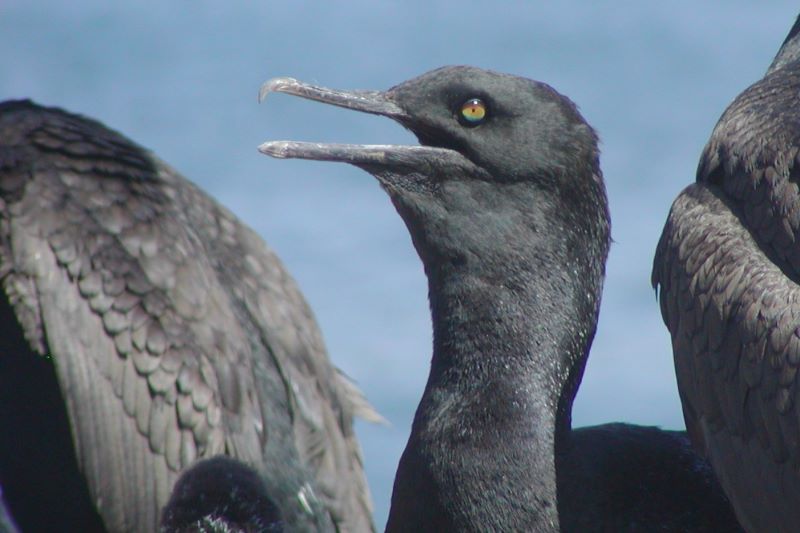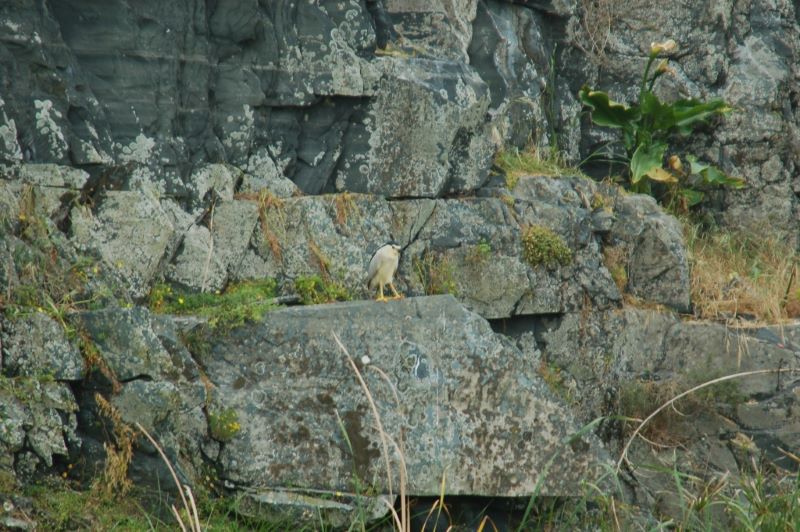Visiting Robben Island generally means going on the tourist tour, which may seem restrictive to birders, but there are still some great opportunities for birding. This blog will point out some tips to maximise your birding experience on the island.
Robben Island is South Africa’s largest coastal island. It is 11 km from Table Bay harbour in Cape Town and the closest point on the mainland is 7 km (Bloubergstrand). It is 5 km long and 2 km wide with the highest point at 30 m a.s.l.
Top species: globally threatened seabirds – African Penguin (1 669 breeding pairs), Crowned Cormorant (74 breeding pairs), Bank Cormorant (93 breeding pairs), Cape Cormorant (2 166 breeding pairs) and African Black Oystercatcher (266 individuals), Hartlaub’s Gull (average 1 695 3 243 individuals) and Swift Tern (average 9 311 individuals). A high number of Kelp Gulls breed on the island.
In some years, a large heronry forms in different parts of the island. The alien thickets support Cape Spurfowl and the only ‘naturalised’ population of Chukar Partridge in South Africa. The island also previously hosted a breeding population of feral Indian Peafowl.
Booking tickets
First check the swell forecast here, or on one of the surfing sites, and check that the wave height is less than 4m for the day you want to go.
Book your ticket online, a day or two in advance (after checking the weather), choosing the earliest ferry (usually 9am).
On the day, take a backpack with camera, binoculars, water bottle, etc.
Ferry trip
You can watch for seabirds from the deck of the ferry – when boarding you will need to sit inside until after the safety briefing – then go outside from the inside top deck and sit outside (limited seating). You may see African Penguins swimming, as well as other common seabirds. During spring, you may see lines of Sacred Ibis and Cattle Egret flying between the mainland and the island – these birds often breed on Robben Island, but find most of the food for their chicks on the mainland.
Sabine’s Gull and Arctic and Pomarine Skuas may be encountered in summer and Subantarctic Skuas in winter.

As the ferry passes the eastern side of Robben Island, scan for moulting penguins on the beach, and other species.
As the ferry enters Murray Bay Harbour, you will see numbers of cormorants on the breakwater, mostly being roosting Cape Cormorants, but also Bank (breed on the leeward side of the northern breakwater) and White-breasted. Wait near exit so you can get off the ferry quickly.

Harbour to prison area
In the harbour area you may see White-throated Swallows (in summer), House Sparrow and Cape Wagtail. Gulls and terns may rest on the roof of the harbour building.
From the ferry, walk towards the prison ahead of the crowds of visitors to look for Chukar Partridge. You could skip the walk through the prison cells to bird outside the prison.
Bus tour
When the bus picks up visitors, get on first so that you can choose a seat near the front of the bus. The bus has many stops with the tour guide telling the history of the island. Keep scanning for birds at all stops. From bus you may also see Chukar Partridge, as well as Helmeted Guineafowl and Cape Spurfowl – so keep scanning in gardens, along road, bushes, etc.
At some stops, visitors can get out, and by being near the front, you can get out more quickly. One of the stops is on the south side of the island, facing Table Mountain. Here you can look for African Black Oystercatchers, Little Egrets, and the occasional wader on the rocky shore. Also look for these species while driving around the island.
If the bus drives through the quarry on the south side, look out for Black-crowned Night Heron on the edges of the pond (or flying away), and for waterbirds on the pond.

There is another small pond on the north side of the island that may attract waterbirds and waders. Try to ask the driver to briefly stop here so that you can scan for birds.
At the main prison quarry, listen and look for Rock Kestrel or Cape Canaries in the surrounding trees.
The main penguin colony is on the north-east side of the island, and there is a boardwalk and hide that are reached by following the signs to the right when leaving the harbour. The birds nest mainly under trees or bushes in the north and east of the island.
Best season
The best time of year to visit, if possible, is when there are large numbers of waterbirds and seabirds breeding. Sacred Ibis and Cattle Egret breed in a large heronry. The location varies from year to year, but keep watching where these birds are flying to and from. Also Hartlaub’s Gulls, Kelp Gulls, and Swift Terns breed and may be seen from the bus drive.
Swift Terns – usually breeding peaks in February and March in the Western Cape

At the end of the bus tour, keep birding in the harbour area for cormorants and other birds, while visitors are stopping at the shop and toilets.
Bird lists for Robben Island
Crawford RJM, Dyer BM. 2000. Wildlife of Robben Island. Bright Continent Guide, Avian Demography Unit, Cape Town. 1:28 pp
- 143 bird species listed, copies may be at the Robben Island shop (I have a few printed copies)
Sherley RB, Dyer BM, Underhill LG, Leshoro TM. 2011. Birds occuring or breeding at Robben Island, South Africa, since 2000. Ornithological Observations 2: 69-100.
- 164 species
Underhill LG, Barham PJ. 2016. The significance of Robben Island for birds: A collection of research papers. Biodiversity Observations 7.45: 1-10.
Some of my research from Robben Island
Oschadleus HD. 2003. Cape Weaver population on Robben Island. Bird Numbers 12(2):27-30.
- estimated population 224 birds
Barham PJ, Crawford RJM, Underhill LG, Wolfaardt AC, Barham BJ, Dyer BM, Leshoro TM, Meÿer MA, Navarro RA, Oschadleus D, Upfold L, Whittington PA, Williams AJ. 2006. Return to Robben Island of African Penguins that were rehabilitated, relocated or reared in captivity following the Treasure oil spill of 2000. Ostrich 77:202-209.
Oschadleus HD, Brooks M. 2008. Bigamy in Cape Sparrows. Bird Numbers 14(1):18-19.
Oschadleus HD. 2009. An irruption of Red-billed Quelea in the Western Cape province, South Africa. Ostrich 80:193-196.
Oschadleus HD. 2012. Trapped! Weaver nests as death traps. Ornithological Observations 3:38-43
Webpage updated 13/11/2023
